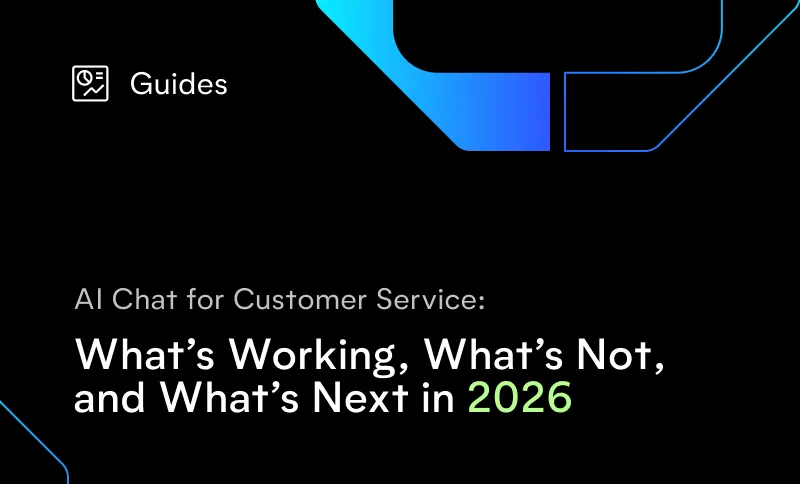
The push towards customer service AI is no longer just a trend, it’s a necessary evolution to address several pressing challenges including agent shortages, hiring challenges, low CSAT and high costs.
Early success with AI has led to forecasts suggesting 80% of customer service organizations will implement AI by 2025, decreasing dependence on agents by 20-30% and creating new roles focused on AI enablement within the industry. It’s also anticipated to slash contact center costs by a staggering $80 billion by 2026.
Despite these exciting projections, successfully integrating AI into contact center operations isn’t instantaneous and requires strategic planning to get right.
But no matter what kind of strategy you pursue, the ideal first step is clear-cut. Let's dive into why a Call Assessment is essential and how it paves the way for accelerated, long-term AI success in contact centers.
A Call Assessment is a simple and crucial first step
A Call Assessment is an impactful, customized report that uses a sample of your contact center data to identify the call drivers agents spend the most time on. It breaks down the tasks that currently require the most manual resources and identifies calls that are best suited for AI automation.
Conversely, it reveals the more complex call types that agents could spend more time on as a result. This pivotal exercise sets the foundation for identifying a tailored AI solution that is not only efficient but also aligned perfectly with the unique needs of your contact center.
A call assessment can be completed with as little as 100 call recordings. This data is combined with your typical agent cost per minute and annual call volumes to extrapolate a full view of AI’s impact, and can be completed in just a few short days.
A Call Assessment enables more informed decision making
There’s more to identifying AI-ready call types than simply finding which requests agents spend the most time on. A Call Assessment takes into account where AI currently has the most success resolving calls end-to-end without sacrificing customer satisfaction.
Without a full view of both your agents’ true call splits and AI’s proven areas of strength, contact centers can find themselves applying automation to use cases that won’t end up having a significant impact on efficiency, or those that are best suited to be handled by agents.
In both cases, beginning an AI implementation without a complete understanding of the downstream effects it will have on your business and customers will quickly begin to feel like climbing a mountain without a trail.
Projecting the transformative impact of AI with confidence
Applying AI to customer service is no small decision. Typically, it requires buy-in from stakeholders in the contact center, IT and the C-suite.
By identifying high-volume use cases, leaders can clearly communicate the value of AI-powered call resolution to stakeholders by tying impact directly to their respective goals. ROI and net hiring savings, for example, are always top of mind for finance and operations, whereas CSAT and SLAs may matter most to CX leaders.
A Call Assessment enables service leaders to show the cost per minute savings that will result from applying AI to a use case, as well as the projected resources and time needed to implement a solution. These projections can significantly impact how contact centers plan for upcoming factors like seasonal call spikes, hiring and workforce planning.
A Call Assessment also becomes a de facto roadmap for AI, surfacing low-hanging fruit, and mid and long-term use cases that serve as milestones for scaling AI in the future.
Focusing your evaluation process on your unique priorities
Navigating a complex and rapidly growing market of AI solutions can be just as daunting as implementing AI. But once your organization has identified a clear set of call types that offer predictable savings and efficiency benefits, service leaders are able to focus their evaluation on solutions that perform best for their unique use cases.
Will your use cases benefit from GenAI? Now you can evaluate solutions based on their LLM experience and guardrails. Will there be a significant amount of data collection flows, like collecting long order numbers from callers? Now you can evaluate solutions based on capabilities like transcription accuracy.
Beyond projecting savings and impact, a Call Assessment is an invaluable tool for finding out which questions your contact center needs to be asking to ensure success.
Conclusion
As contact centers evolve to make AI an integral part of their service model, time is of the essence. Move too quickly and you risk investing too heavily in a solution that puts your customer experience and your budget at risk.
But spend too much time taking a wait and see approach and you risk falling behind and prolonging service capacity challenges. In order to develop an AI strategy that instills confidence and predictability from day one, the visibility that a Call Assessment provides cannot be underestimated.
Regardless of what step two ends up looking like for your organization, step one can begin now with a free, fully customized Call Assessment that can be completed in just days.



.svg)


